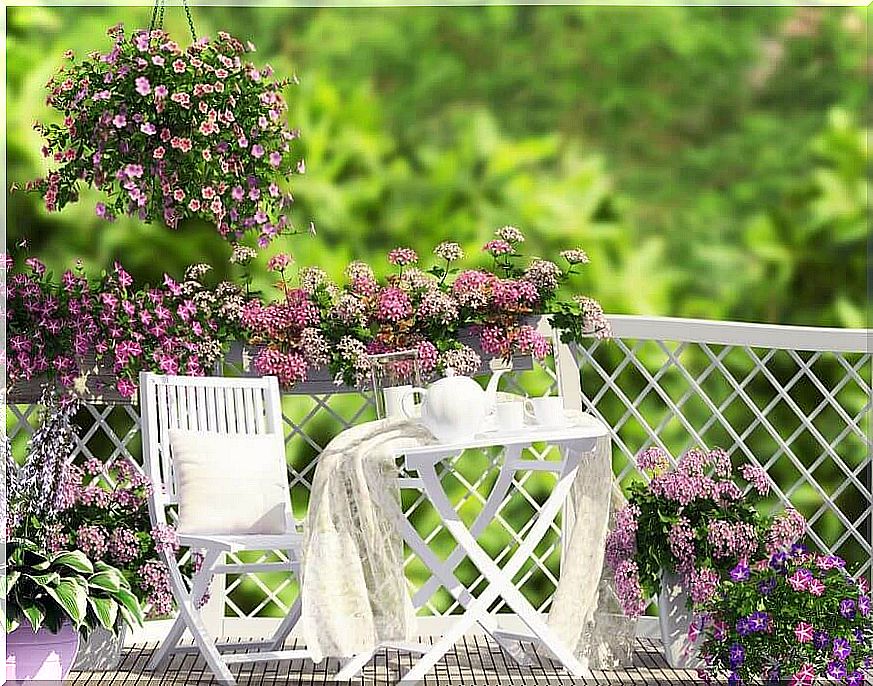5 Benefits Of Terraces And Green Roofs
The popularity for a sustainable and respectful life with nature is gaining ground. The eco-friendly trend dominates the different scenarios of the social agenda to guarantee a healthier outlook, both for people and for the planet. Therefore, terraces and green roofs are a beneficial alternative.
Although it seems like a fantasy taken from the 70s, the truth is that the practices that serve to reduce environmental pollution also help improve the quality of life. Also, most of the big cities are dominated by concrete and asphalt. Materials that cause a dramatic increase in temperature.
It has been shown that a single asphalt roof can generate about 70 ºC on its surface. That is why heat abounds in metropolises, a product of the jungle of buildings, streets and other polluting areas.
This form of construction is known as “Heat Island”. Among other things, because most buildings retain and accumulate high temperatures for several days without dissipating.
Why are green roofs and terraces beneficial?
They are basically sustainable ecosystems installed directly in the home. There are different types, depending on the characteristics of the roof. These can be semi-extensive and extensive. In general, they serve to extend the useful life of the home. Facilitating better waterproofing and optimizing thermal insulation.
Aesthetic enhancements

They are usually aesthetically striking and very beautiful areas. In some cases, large landscape designs can be observed that provide elegant and comfortable environments, framed within an ecological vision.
Cooler atmospheres thanks to terraces and green roofs
The terraces and green roofs clean the air that is breathed in the houses where they have been built. Which implies greater oxygenation and less heat in summer times. This situation has an important economic effect, by reducing the expenses in electrical appliances that serve to regulate the temperature of the home.
Likewise, the direct benefit of better air quality has an impact on the reduction of respiratory problems associated with excess carbon monoxide pollution and other polluting substances that abound in large urban centers.
Recycling and reuse of rainwater

The collapse of the streets, as a result of heavy downpours, is a relatively common problem. This is caused by the high number of drainage and sewerage systems. What inevitably ends up saturating and increasing the volume of wasted and polluted water in urban centers.
As the natural cycle recovers, floods caused by the rains are reduced, which is another of the great advantages provided by terraces and green roofs. It also allows the reuse of water, after being purified by plants and leaves that filter contaminated substances.
Less noise, more peace of mind
Living together is much more pleasant when annoying noises are reduced. A green roof helps to muffle or even isolate the sounds coming from outside the house by up to 50 decibels.
This ‘ecological’ situation improves people’s quality of life. Especially for those who suffer from nervous diseases or do work inside their homes, increasing their productivity.
Economic savings

The overall average lifetime of a roof protected with just an asphalt waterproofing membrane is 15 years. This is due to continuous direct exposure to the sun, with all the atmospheric changes. Mainly because of the variations in temperatures.
On the other hand, the terraces and green roofs protect the roofs in quite efficient ways, thanks to the fact that the vegetation cover decreases and isolates the heat. This situation increases the usefulness of the roof for up to approximately 25 years. Which translates into a reduction in maintenance costs of the order of 40%.
Increase of terraces and green roofs in urban areas
Roofs with green coverings are a complement to parks, gardens and other green areas in cities. In addition to serving as a recreational option, they contribute to solving the problem of the greenhouse effect in the world.
Finally, they can be very useful spaces for the production and internal consumption of plant foods. Especially in those areas where buildings abound. With planning and the commitment of organized communities, the benefits become significant.









